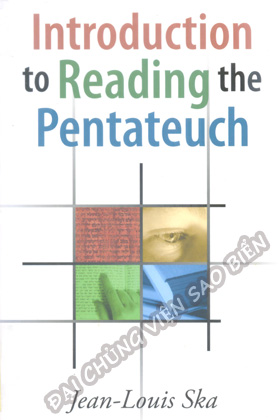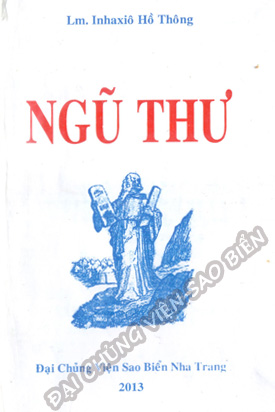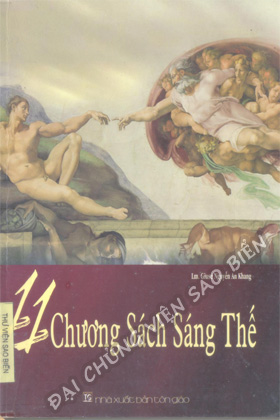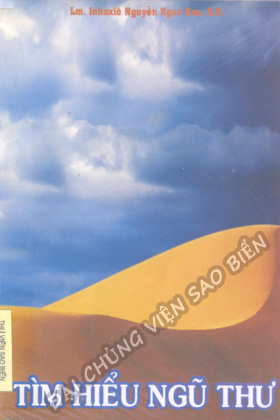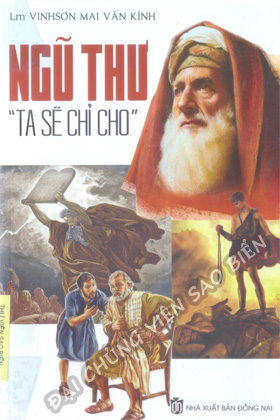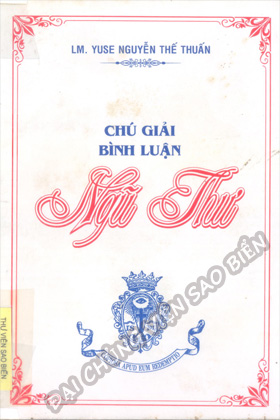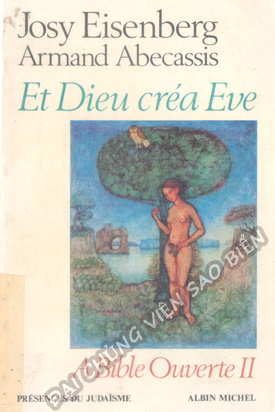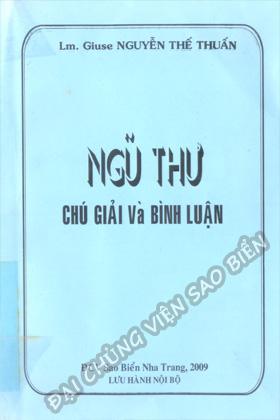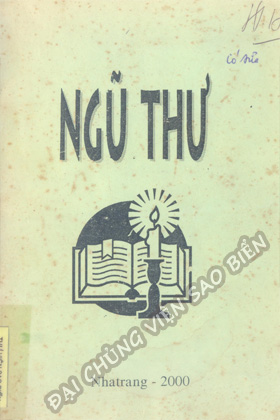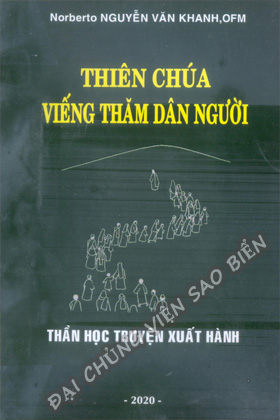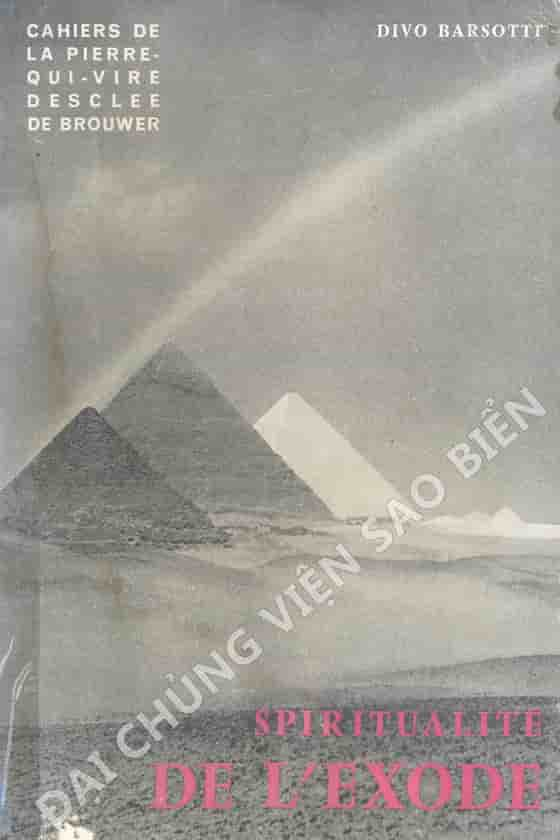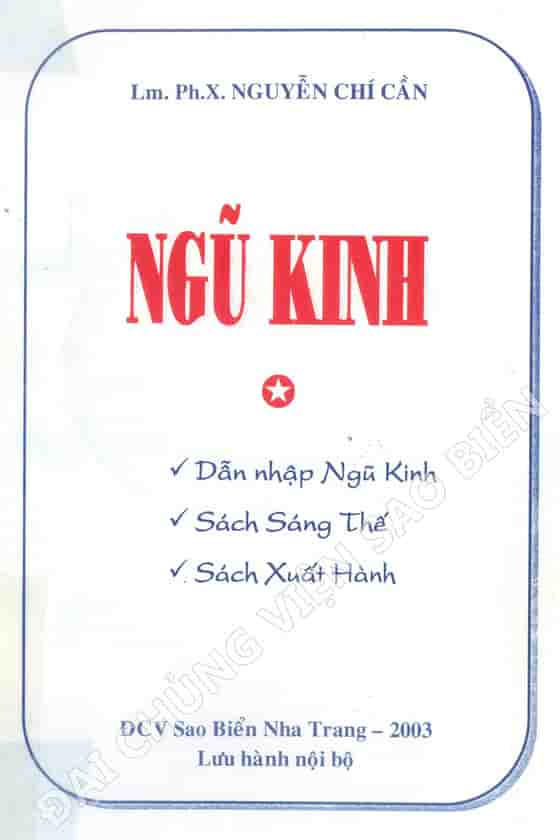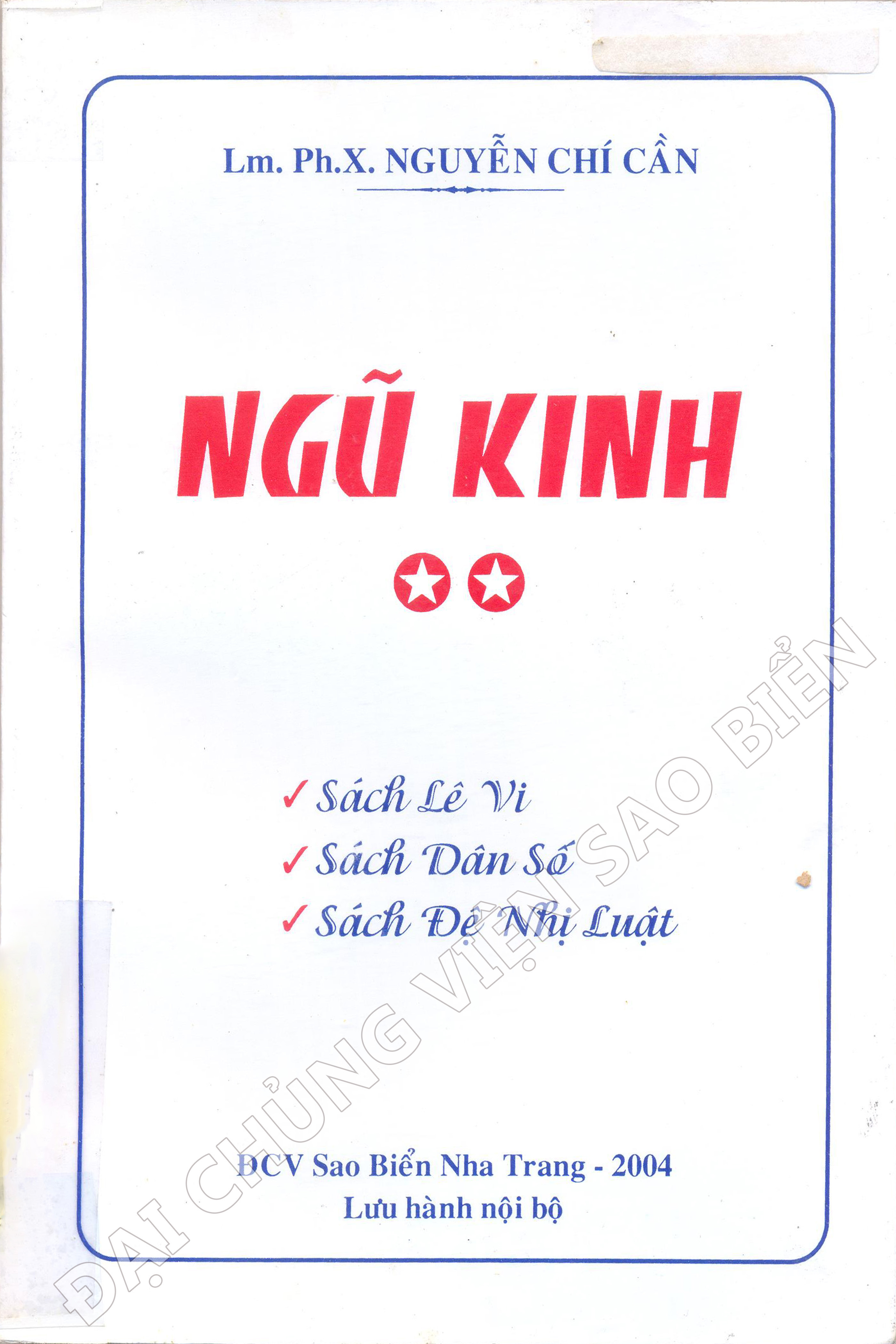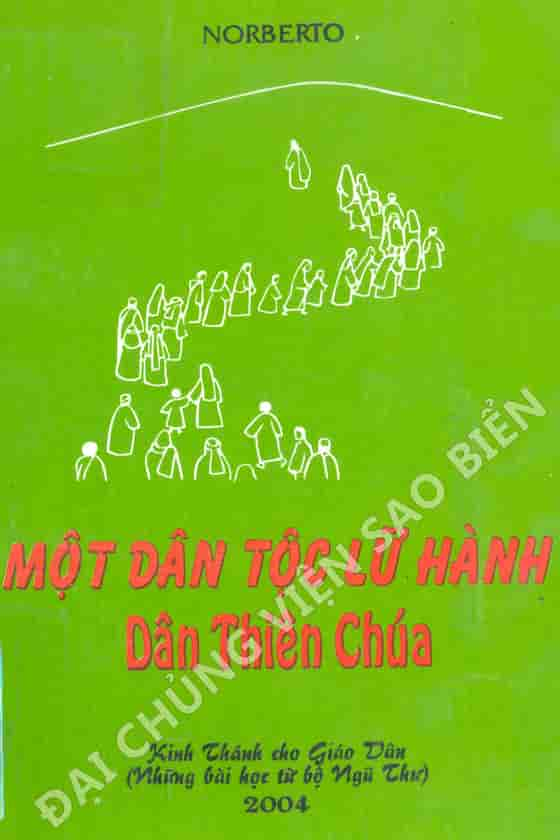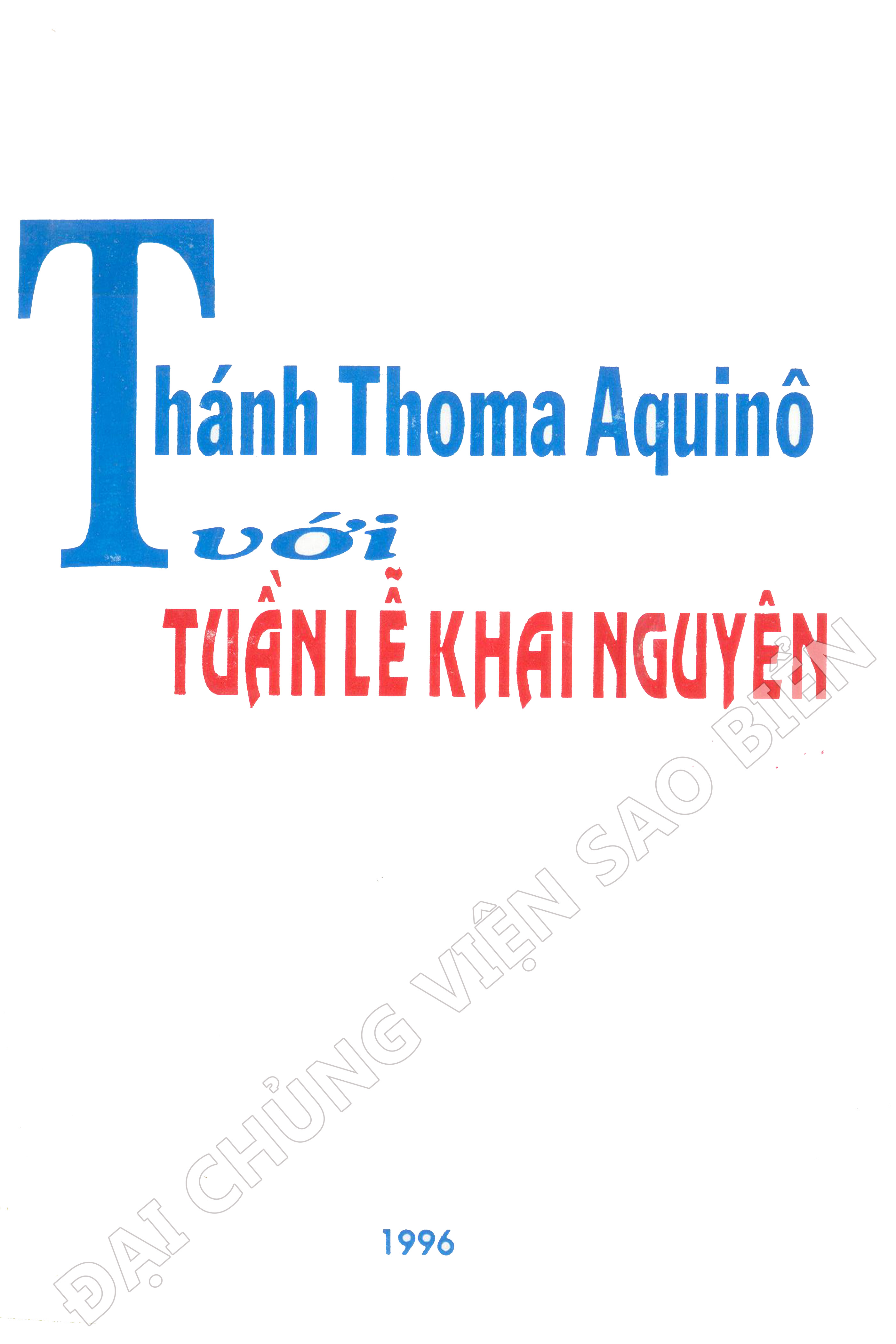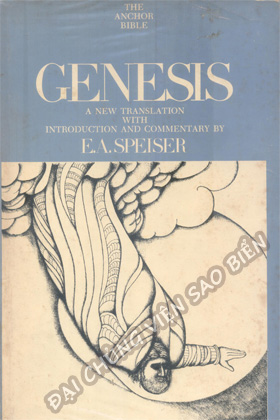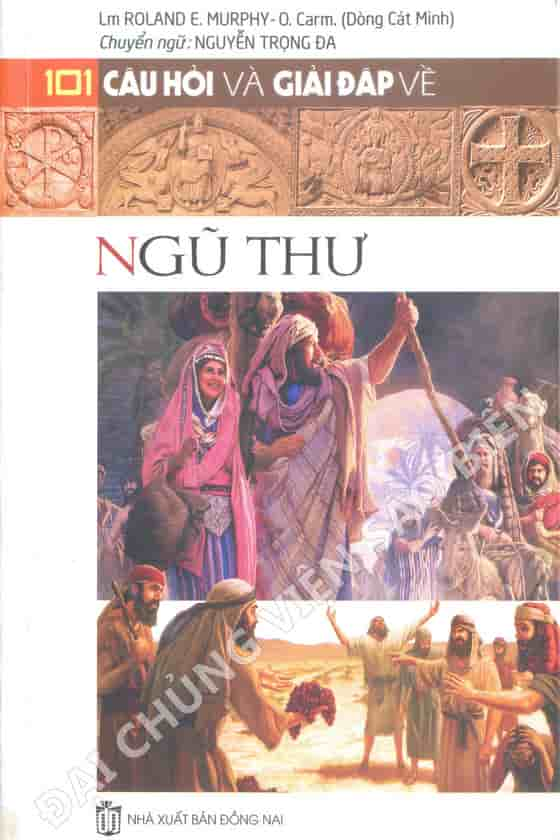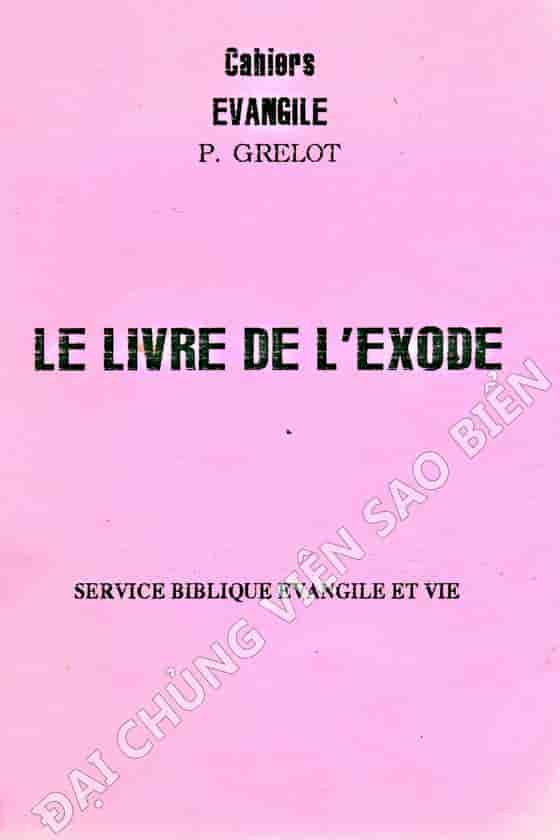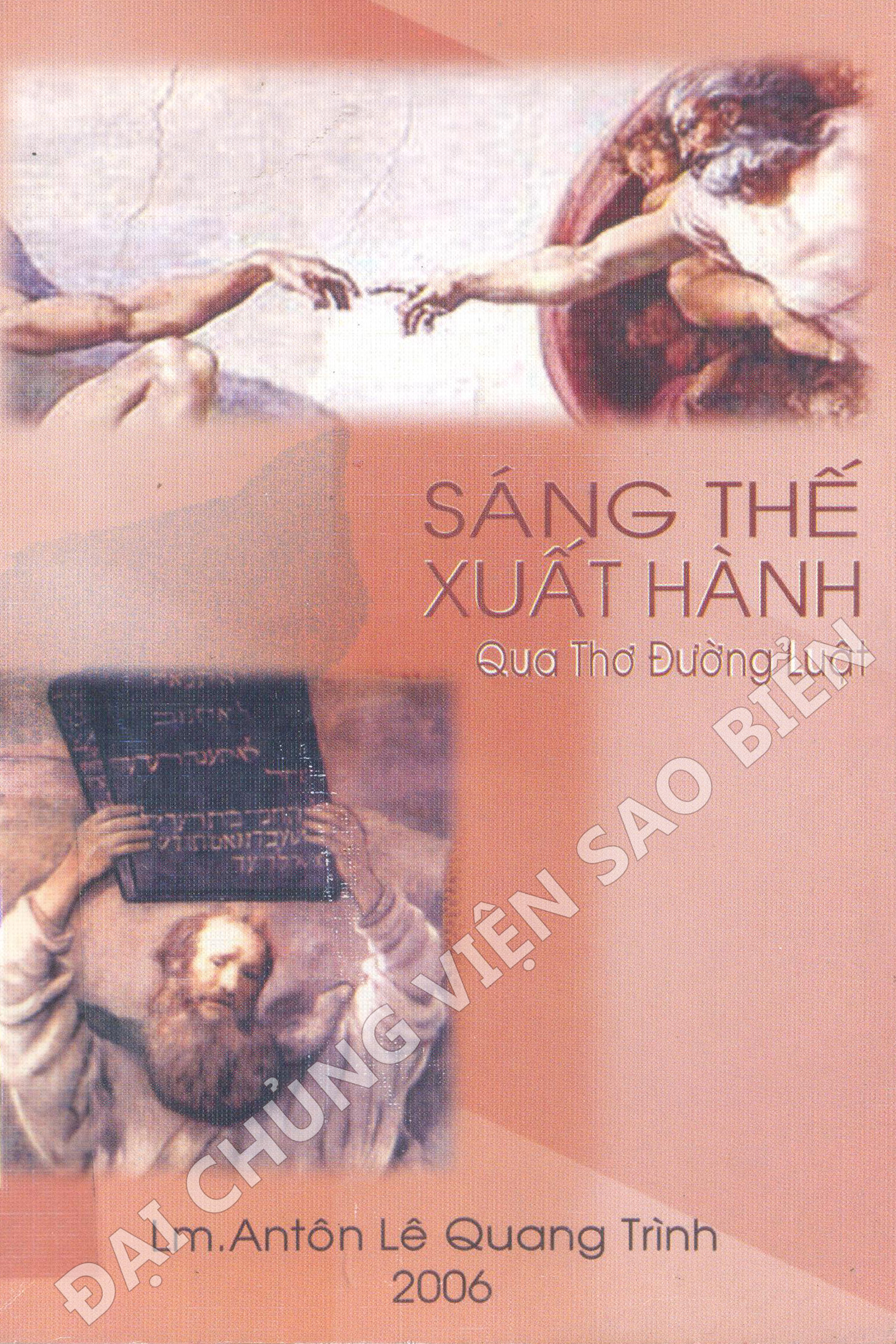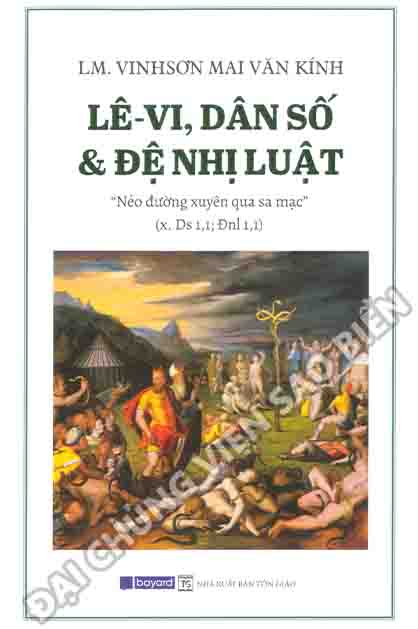| NỘI DUNG |
TRANG |
| Forewod to the English Translation |
vii |
| Perface |
ix |
| Abbreviations |
xiii |
| Some Common Textual Abbreviations |
xiii |
| General Abbreviations |
xiii |
| Reference Works |
xiv |
| 1. Basic Questions about the Pentateuch |
1 |
| A. The Origin of the Word Pentateuch and Its Usage |
1 |
| B. Tetrateuch. Pentateuch, Hexateuch, or Enneateuch? |
3 |
| C. Moses, the Pentateuch, and the Canon of the Hebrew Bible |
9 |
| 2. The Five Books of the Pentateuch: Content and Structure |
16 |
| A. The Division into Five Books |
16 |
| B. The Structure of the Book of Genesis |
19 |
| C. The Structure of the Book of Exodus |
26 |
| D. The Structure of the Book of Leviticus |
32 |
| E. The Structure of the Book of Numbers |
35 |
| F. The Structure of the Book of Deuteronomy |
38 |
| 3. Literary Problems of the Pentateuch I: The Legislative Texts |
40 |
| A. The Laws with Regard to Slaves |
40 |
| B. The Laws regarding Loans: Exod 22:24, Deut 23:20-21, Lev 25:35-36 |
45 |
| C. The Laws concerning the Enemies's Donkey or the Love of One's Enemies: Exod 23:4-5. Deut 22:1-4, Lev 19:17-18 |
46 |
| D. The Decalogue |
48 |
| 4. Literary Problems of the Pentateuch II: The Narrative Texts |
53 |
| A. Diferent Versions of the Same Event |
53 |
| B. Doublets within a Single Narrative |
60 |
| 5. Literary Problems of the Pentateuch III: Some Redactional Interventions |
76 |
| A. Two Examples of Redactional "Insertions" |
76 |
| B. The "Resumptive Repetition" |
77 |
| C. Some "Linguistic Markers" of Redactional Work |
82 |
| D. Important "Divine Discourses" of Redactional Origin |
87 |
| E. Moses' Intercessions: Exod 32:7-14, Num 14:11b-23a |
93 |
| F. Conclusion |
94 |
| 6. Exegesis of the Pentateuch: A History of Research from Ancient Times to 1970 |
96 |
| A. Antiquity and the Middle Ages |
96 |
| B. Humanism and the Beginning of the Modem Exegesis |
99 |
| C. The Classic Documentaty Hypothesis |
102 |
| D. Gunkel, Noth, von Rad, and Form Criticism |
112 |
| E. Other Schools of Research |
123 |
| 7. Recent Developments in the Study of the Pentateuch |
127 |
| A. Criticisms of the Documentary Hypothesis |
127 |
| B. The Problem of the Various Sources |
131 |
| C. The "Synchronic" Study of the Pentateuch |
161 |
| 8. Basic Characteristics of Ancient Literature |
165 |
| A. The Law of Antiquity or Precedence |
165 |
| B. The Law of Conservation: Nothing Is Eliminated |
169 |
| C. The Law of Continuity and Updating |
171 |
| D. The Law of Economy: Only What Is Necessary Should Be Written |
173 |
| E. Extrabiblical Parallels |
177 |
| 9. Reference Points for Reading the Petateuch |
184 |
| A. The Pentateuch and the Reconstruction of Israel after the Exile |
185 |
| B. Anchor Points for Interpretation: Three Codes, Three Theologies, and the Final Redaction |
187 |
| C. Did a Preexilic Source on Israel's Origins Exist? |
191 |
| D. The Preexilic Materials of the Pentateuch |
202 |
| 10. The Pentateuch and Postexilic Israel |
217 |
| A. Persian Imperial Authorization |
217 |
| B. The Theory of Citizens Connected with the Temple (Burger-Tempel-Gemeinde) |
226 |
| Conclusion |
230 |
| Postscript |
233 |
| Bibliography |
235 |
| Indexes |
267 |
| Index of Authors |
267 |
| Index of Scripture |
273 |
